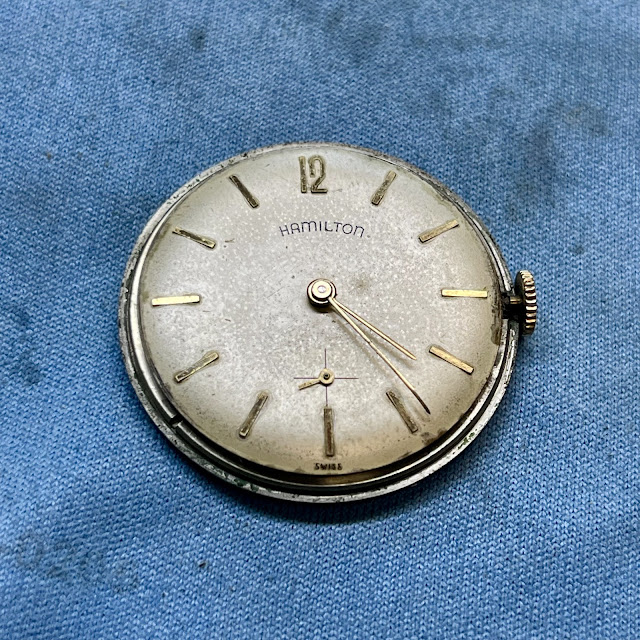It's not so bad...
That's what Hamilton executives must have said to each other in the mid-1950s when Hamilton some models started to be outfitted with Swiss-made movements.
It may not seem like it today, but after WWII the watch industry in the US was under tremendous price pressure. European was still recovering from the destruction of the second world war. European watch companies made excellent time pieces at very low prices - and that drove a price war in the US market. One by one, American watch companies found they could not compete and either closed their factories or "sold out".
Some US brands had already been using Swiss-made movements for decades - like Gruen. Pretty much all the US brands introduced Swiss calibers in order to offer models at price points that could compete.
Sound familiar, it should. The cycle has been at play ever since - just the countries have changed. Once Europe recovered, Japanese makers entered the market. Today, a large portion of "fine watches" feature movements made in China.
The preeminent brands still make their own movements in house - like Rolex. However, the industry today is still very competitive and watches may vary in size, shape, and the name on the dial but in many cases (literally and figuratively) the movement inside comes from the same factory.
Back to Hamilton in the 1950s... times were getting tough. People started to want a TV, perhaps a second car, one of those fancy refrigerators, and to send their kids to college. Watch companies had to offer quality watches at competitive prices. One way to do it was to contract with a Swiss-make and purchase "ebauches" (A-Boo-Shays), or mostly-make movements where the final 10% could be done in-house. It's not unlike buying a Chevy 350 but changing the intake manifold and changing the cam shaft.
How would the Hamilton market react? Executives hedged a little by reintroducing the Illinois Watch Company brand that was acquired at the start of the Great Depression. It had been a couple of decades but people still remembered that Illinois watches were high quality. So Hamilton introduced Illinois watches with Swiss-made movements at their lowest price points and included them in their catalog.
Somehow, the world kept spinning and people bought them. Executives then tempted fate a little further and put Hamilton Illinois on the dial... fingers crossed.
People bought those too. Turns out time is time and if your watch keeps time accurately - that's what people value most, especially if they have money left over to buy a 16" television.
Hamilton introduced Automatic watches the same way and every Hamilton automatic made since 1954 has featured a Swiss-made movement - even up to today.
In 1956 Hamilton switched over to Hamilton branded models. In some situations only the name on the dial changed. They found they had to use up the Illinois-branded movements they had before switching over to Hamilton-branded movements. When the shape of the movement was different, it required a different case back. As a result, in 1956 there are a bunch of "B" models. By 1957 the movements changed and the B was dropped.
My project watch is a great example. It's a new model for the blog - a 1957 Drew. The Drew was an entry level model and priced just under $50 on a strap. That's a little under a $600 in today's currency - not a cheap watch by any stretch but it was the least expensive of the lineup.
In addition to the Swiss caliber inside, The case has a rolled gold plated bezel and the back is stainless steel. The dial is embossed (stamped). So designers of the entry level models did everything they could to keep the price point low.













No comments:
Post a Comment